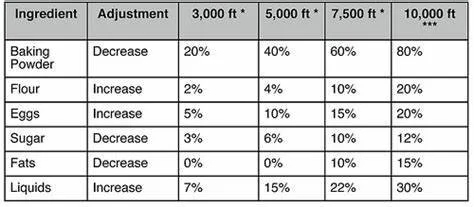Baking Success at Altitude
When I first moved to Colorado from San Diego, I was puzzled as to why my chocolate chip cookies were so thin. I was young, and didn’t realize that the altitude was changing the consistency of my cookie dough as it baked. Intuitively, I started adding an extra 1/4 cup of flour to the recipe found on the back of the chocolate chip package. I was pleased to find that the cookies baked up thicker and had a much nicer “chew.”
It is important that you adjust your recipes if you live at altitude. But how? Some of it is trial and error. That is, some recipes may need no adjustment, and others likely will. Personally, I find that cookies and cakes tend to do better if I add 2 Tablespoons to 1/4 cup additional flour. Without the extra flour, I seem to have a difficult time getting the center to bake fully. I also recommend investing in a cake tester. With longer bake times, you may need to throw some aluminum foil over the tops of your pies or cakes to avoid excessive browning.
Baking pies definitely take longer, be careful about your crusts edge. Wrap it in foil if it begins to take on too much color, too early on.
Below, I have shared a chart showing potential problems and the types of adjustments I would try. Please feel free to comment below in the section, if you have questions, tips or experiences that would serve our community of bakers.
Altitude Baking Adjustments
Keep the following in mind, when you are modifying your recipes for high altitude:
Air pressure will be lower
Temperature needs to be increased
Food takes additional time to bake
Liquids evaporate faster
Gases expand quicker, so dough rises faster
There is a lot of science to baking at altitude. You may want to consider looking at some high altitude recipes and see if you can note the differences used. It might be wise to purchase a book on high altitude baking, or search the web for baking at altitude.
Try High Altitude Baking by Patricia Kendall



